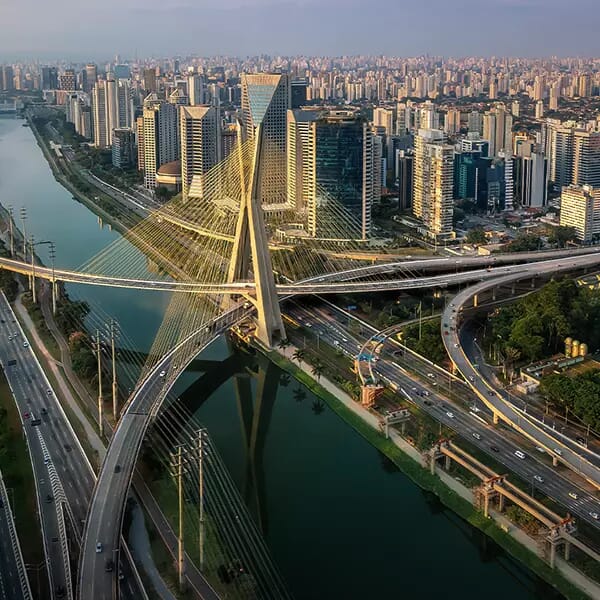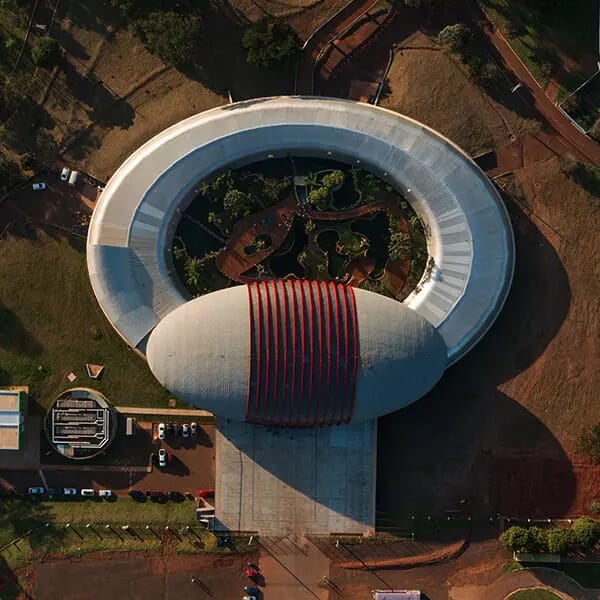 Crédito: Pixabay
Crédito: PixabayMexico: Imco calls for concrete projects in new infra plan
Mexican Institute for Competitiveness specialist points out the country’s challenges in the infrastructure sector.
September 25, 2019Infrastructure
Mexican president Andrés Manuel López Obrador (also known as Amlo) is about to complete his first year in office with the announcement of a new plan for infrastructure and to encourage private investments in the country. However, there are challenges to regain the business community’s confidence, shaken after the shutdown of the Mexico City International Airport (Naicm) project, in Texcoco.
With contracts already signed in the previous administration, “the cancellation of the works was a complicated issue. There is no doubt that it was something that generated noise and uncertainty among investors,” recalls Ana Thaís Martínez, a researcher at the Mexican Institute for Competitiveness (Imco, by its acronym in Spanish).
To her, another challenge the current management is faced with is the presentation of concrete and robust proposals. “We have four or five projects mentioned specifically in the National Development Plan [PND for 2019-2024], meaning there is no focus or vision to build infrastructure to drive competition and productivity. This concerns us because the PND is the only public document we have access to and through which we can analyze what is being proposed,” says the expert.
“It seems that many of the president’s proposals are within the scope of discourse and it would be necessary to elevate this to concrete programs so that all Mexicans – civil society and the private initiative – can see and study what is being proposed for the short, medium, and long term,” she goes on.
The institute also says the PND is expected to be updated between late 2019 and early 2020. “Today, however, we have nothing more than statements,” reiterates the researcher.
“We are prepared to partner in building Internet service infrastructure across the country and in developing the Tehuantepec Isthmus,” said BlackRock CEO Larry Fink in a letter, assuring that the company was “strongly committed to Mexico.” Sent to Amlo in April, the letter was released to the press by the presidential team, which called it “a demonstration of confidence” in the country.
Last August, at a news conference, alongside mogul Carlos Slim, Amlo confirmed a new plan for the infrastructure sector. “We are talking to entrepreneurs who are participating in a national infrastructure plan,” he said. At the time, Amlo stressed that one of his administration’s priorities was to facilitate private investments in the country.
Slim, meanwhile, estimated that Mexico has about 1,600 infrastructure projects that can attract private enterprise and boost national growth. So far, there are no details on a new proposal.
One of the business opportunities for the private sector “is the Trans-Isthmian train, especially at the development poles that will be built through the railroad. Investments will be needed in the region, at the ports of Salina Cruz [state of Oaxaca] and Veracruz [state of the same name]. These are poles that are generating interest,” says Ana Thaís Martínez.
According to the analysis conducted by Imco, in addition to reaching values higher than initially expected, in the worst-case scenario, the project would not actually meet the objectives of providing development and integration to the surrounding regions.
“The Maya Train is a huge project, spanning five states, from 17 to 32 stations [...] and initiatives like this one do not seem profitable – in particular because there are other competitors in the region, such as roads and highways, and a touristic train might not reach the [expected] revenue to cover costs. Thus, the government would have to subsidize the project forever,” she points out.
The project aims to connect the country’s tourist regions, integrating the populations of the so-called Mayan zone. According to official data, the obsolete Palenque to Valladolid railways were expected to be rebuilt in 2019, a stretch accounting for half of the entire project. The bidding phase for executive projects, environmental impact studies, and consultation with indigenous peoples on the development of the other part would then begin.
Later this year, work will begin on the Valladolid-Cancún stretch and for the Caribbean I connection. The Jungle and Caribbean II stretches are planned for 2020. “The 1,500 kilometers of rails will be built in four years, and the operation will start in the fifth. Most stations and collateral developments will be done using mixed investments,” according to an official statement from the Mexican government.
“All projects are already in some stage of contracting, bidding or adjudication; however, feasibility and economic, legal, technical, and social impact studies have not been conducted for any of these initiatives. We consider that it would be necessary to slow down and make proper planning. This is the only way to create infrastructure projects that survive over time,” notes Ana Thaís Martínez.
Another matter that concerns the Mexican institute is related to social issues, since the railroad region is occupied by native populations. In accordance with local law, public consultations and hearings would be held to reach a consensus with such peoples.

GRI Club Infra will hold the third edition of Infra Mexico GRI, a consolidated conference dedicated to key themes for advances in the infrastructure sector, on September 25 and 26. Learn more.
With contracts already signed in the previous administration, “the cancellation of the works was a complicated issue. There is no doubt that it was something that generated noise and uncertainty among investors,” recalls Ana Thaís Martínez, a researcher at the Mexican Institute for Competitiveness (Imco, by its acronym in Spanish).
To her, another challenge the current management is faced with is the presentation of concrete and robust proposals. “We have four or five projects mentioned specifically in the National Development Plan [PND for 2019-2024], meaning there is no focus or vision to build infrastructure to drive competition and productivity. This concerns us because the PND is the only public document we have access to and through which we can analyze what is being proposed,” says the expert.
“It seems that many of the president’s proposals are within the scope of discourse and it would be necessary to elevate this to concrete programs so that all Mexicans – civil society and the private initiative – can see and study what is being proposed for the short, medium, and long term,” she goes on.
The institute also says the PND is expected to be updated between late 2019 and early 2020. “Today, however, we have nothing more than statements,” reiterates the researcher.
New infrastructure plan
Even with the prospect of ending the year with below-expected growth, at 0.9 percent, according to International Monetary Fund (IMF) forecasts reported in July, factors such as recent statements of support from the BlackRock investment fund and businessman Carlos Slim for the development of Mexican infrastructure could mean a new chapter in the local public-private relationship.“We are prepared to partner in building Internet service infrastructure across the country and in developing the Tehuantepec Isthmus,” said BlackRock CEO Larry Fink in a letter, assuring that the company was “strongly committed to Mexico.” Sent to Amlo in April, the letter was released to the press by the presidential team, which called it “a demonstration of confidence” in the country.
Last August, at a news conference, alongside mogul Carlos Slim, Amlo confirmed a new plan for the infrastructure sector. “We are talking to entrepreneurs who are participating in a national infrastructure plan,” he said. At the time, Amlo stressed that one of his administration’s priorities was to facilitate private investments in the country.
Slim, meanwhile, estimated that Mexico has about 1,600 infrastructure projects that can attract private enterprise and boost national growth. So far, there are no details on a new proposal.
Opportunities and new business
Among the ongoing projects in Mexico, in addition to Tehuantepec, there is also the expansion of the military airport of Santa Lucía, an alternative that has been announced to Naicm, and the Maya Train, considered the federal government’s most ambitious project and currently estimated at around $6.3 billion.One of the business opportunities for the private sector “is the Trans-Isthmian train, especially at the development poles that will be built through the railroad. Investments will be needed in the region, at the ports of Salina Cruz [state of Oaxaca] and Veracruz [state of the same name]. These are poles that are generating interest,” says Ana Thaís Martínez.
Maya Train Project
On the other hand, the researcher – who was responsible for a study that analyzed the profitability of the Maya Train project – is concerned with the development of this railway. “Due to its complexity and size, this project should have been planned over a period of three to four years. However, we see that the federal government has an urgency to announce [new] works. This implies not carrying out robust planning and, in the long run, many errors are likely to appear at the construction stage,” she believes.According to the analysis conducted by Imco, in addition to reaching values higher than initially expected, in the worst-case scenario, the project would not actually meet the objectives of providing development and integration to the surrounding regions.
“The Maya Train is a huge project, spanning five states, from 17 to 32 stations [...] and initiatives like this one do not seem profitable – in particular because there are other competitors in the region, such as roads and highways, and a touristic train might not reach the [expected] revenue to cover costs. Thus, the government would have to subsidize the project forever,” she points out.
The project aims to connect the country’s tourist regions, integrating the populations of the so-called Mayan zone. According to official data, the obsolete Palenque to Valladolid railways were expected to be rebuilt in 2019, a stretch accounting for half of the entire project. The bidding phase for executive projects, environmental impact studies, and consultation with indigenous peoples on the development of the other part would then begin.
Later this year, work will begin on the Valladolid-Cancún stretch and for the Caribbean I connection. The Jungle and Caribbean II stretches are planned for 2020. “The 1,500 kilometers of rails will be built in four years, and the operation will start in the fifth. Most stations and collateral developments will be done using mixed investments,” according to an official statement from the Mexican government.
“All projects are already in some stage of contracting, bidding or adjudication; however, feasibility and economic, legal, technical, and social impact studies have not been conducted for any of these initiatives. We consider that it would be necessary to slow down and make proper planning. This is the only way to create infrastructure projects that survive over time,” notes Ana Thaís Martínez.
Another matter that concerns the Mexican institute is related to social issues, since the railroad region is occupied by native populations. In accordance with local law, public consultations and hearings would be held to reach a consensus with such peoples.
Infra Mexico GRI 2019

GRI Club Infra will hold the third edition of Infra Mexico GRI, a consolidated conference dedicated to key themes for advances in the infrastructure sector, on September 25 and 26. Learn more.



